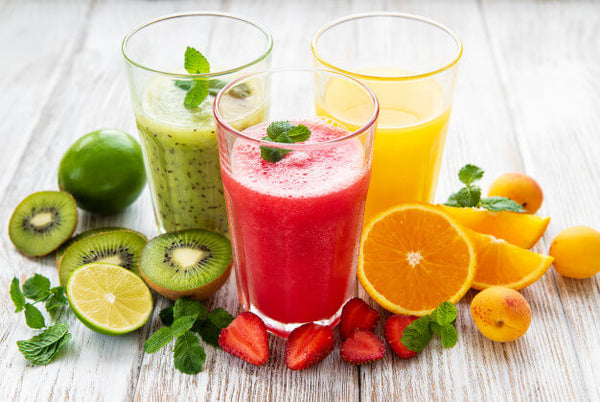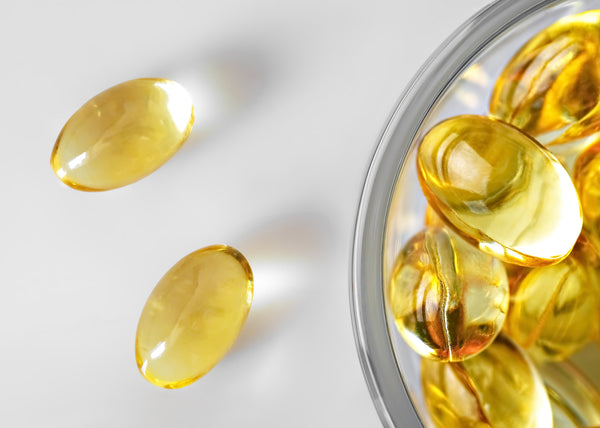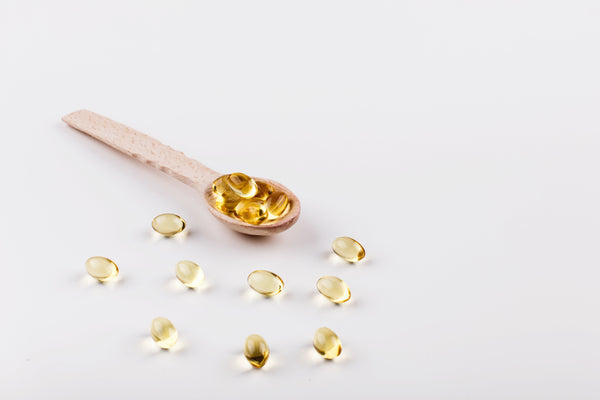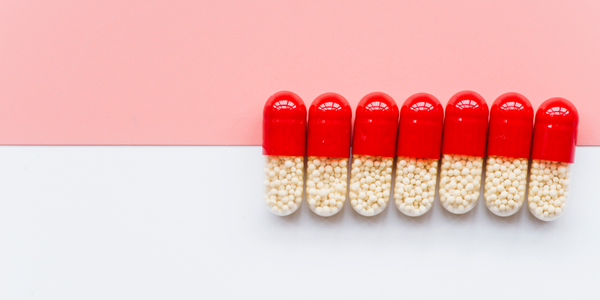‘Eat your vegetables’ is something we all would have heard umpteen number of times as kids. And rightly so. Vegetables, especially green leafy vegetables are packed with a lot of beneficial nutrients like vitamins, minerals and fiber – which are usually missing in our fast-paced lives these days.
Wellbeing Nutrition’s Daily Greens is a set of 15 effervescent tablets that contains the goodness of antioxidant-rich fruits and vegetables, which promises to fill the nutritional gaps that your daily diet may lack, courtesy of your hectic schedule. As the name suggests, this wholesome effervescent tablet contains all that you need to meet your vitamin, mineral and antioxidant requirement. Moreover, it is made using over 39 organically sourced ingredients.
It is completely plant-based, vegan, gluten free, sugar free and Non-GMO (for all the health freaks and clean eaters).
So what are these ingredients, you ask? Let us deep dive into the ingredient list that this ‘wonder’ tab contains, to get to know what each of them has to offer!
1. Spinach : Well, you may know this vegetable as Popeye the Sailor Man’s go-to food to save Olive Oyle! Spinach is a power-packed vegetable that is a rich source of Vitamin K. We all know the importance of Vitamin K in bone health and blood coagulation function. Apart from that, spinach is rich in flavonoids, carotenoids, Vitamin C and folic acid. All these nutrients are known to play a significant role in reducing the risk of cancer, treatment of anemia and improving eye health.
2. Kale : This is the new western superfood. It is rich in minerals like magnesium, calcium, zinc and selenium. Research suggests that the bioavailability of calcium in Kale is higher than in milk. Vitamin C, beta carotene, lutein and xanthine are some antioxidants that this amazing vegetable contains. All of these compounds have anti-inflammatory, anti-bacterial, gastro protective properties, which may help reduce the risk of chronic diseases like cardiovascular diseases and cancer.
3. Aloe Vera : It is known for its all-time natural cosmetic functions. Apart from that, it also contains many active compounds that have beneficial properties. Aloe vera contains antioxidant vitamins, certain important enzymes involved in various metabolic and cosmetic functions, and minerals like chromium, selenium and zinc. This humble aloe vera is also known for its healing properties on skin for wound healing, acne and acne scars.
4. Wheatgrass : The popular anti-cancer potion, wheatgrass powder, or wheatgrass juice is found in every cancer patient’s diet! Preliminary research has shown that wheatgrass contains anti-cancer activity and alleviates chemotherapy side effects. Apart from its role in cancer, it is also beneficial in certain lifestyle disorders like obesity and diabetes due to its antioxidant capacity.
5. Brussels Sprouts : Although these are not native to India, Brussels Sprouts are gaining a lot of popularity these days. As it also belongs to the same vegetable family as kale, it contains vitamin C, vitamin K, folic acid and carotenoids, and by now, we need not say how important these vitamins are!
6. Spirulina : This is yet another ‘superfood’. It is known as an energy booster, as it contains compounds that result in high energy levels. Spirulina also contains healthy bacteria for good gut health, which helps in lowering cholesterol and reducing the risk of cancer.
7. Chlorella: Chlorella is new to this superfood clan. It is nutrient-rich, and contains vitamin D, vitamin B12, folate and iron. Recent research states that chlorella has several benefits like boosting immunity, stimulating antioxidant activity, and displaying protective effects against diabetes, high blood pressure and dyslipidemia.
8. Broccoli : Just as other cruciferous vegetables, broccoli is high in certain bioactive compounds like phytochemicals, phenols, vitamin C and minerals like chromium and selenium. Due to the presence of these compounds, a lot of research supports the fact that broccoli has anticancer and antioxidant activity.
9. Ashwagandha : Also known as the ‘Indian Ginseng’, it is one of the most important and popular herbs in Ayurveda. It has numerous benefits like promoting mental health and cognition, boosting immunity, enhances the body’s ability to respond to stress and an antioxidant that helps in cell repair and regeneration.
10. Alfalfa : This herb like the other ingredients contains bioactive compounds that have anti-inflammatory, antioxidant, detoxification and cardioprotective effects on the body.
11. Moringa : This superfood sells like hotcakes these days. This is because it is power-packed and nutrient-dense containing a number of vitamins, carotenoids, and polyphenolic compounds, that have a wide variety of beneficial therapeutic effects such as lowering cholesterol levels in the body, improving energy levels, boosting immunity and reducing blood sugar levels
12. Basil : The Holy Basil, or Tulsi, is an age-old Ayurvedic herb that is well known for its innumerable health benefits, ranging from combating metabolic stress, lowering blood sugar levels, promoting heart health, exerting antibacterial activity and being a natural detoxifier.
13. Acai : This Western berry is increasingly famous as another superfood these days. It is said to be rich in phytochemicals like anthocyanins and plant sterols that have antioxidant functions. Acai is known to improve cardiac health, increase energy levels and boost mental and cognitive health.
14. Blueberry : The berry family fruits, such as blueberry, are rich in anthocyanins and phytochemicals, making them an indispensable functional food for improving and maintaining good health. It is known to reduce the risk of heart diseases and diabetes, lower oxidative stress in the body, and improve cognition.
15. Turmeric : Everyone is well aware about how beneficial this humble Indian spice is. Right from the ancient days until now, turmeric is popular for its medicinal properties, anti-inflammatory action, antibacterial and antiseptic functions due to curcumin – the active compound. It is known to improve digestion, reduce blood sugar levels and hasten repair and wound healing
16. Cinnamon : This flavourful spice is well known as a functional food for promoting heart health and lowering blood glucose levels. It has anti-inflammatory, antioxidant and antimicrobial properties that make it a popular ingredient for improving health.
17. Green Tea : Consuming a cup of green tea everyday is a health trend that was introduced a few years ago. And rightfully so. It contains a variety of plant polyphenols that are believed to be helpful in preventing cancer, cardiovascular diseases, boosting metabolism and improving energy levels.
To sum it all, there are more than 17 reasons why, daily greens is something you need for your overall wellbeing – right from improving skin health, boosting immunity, to improving energy levels and preventing lifestyle diseases in the long run. Read our blog, ‘Daily Greens- The Future of Cleans And Pure Nutrition’, if you still need some convincing!
References:
- Hanna Kowalska, Jolanta Kowalska, Anna Ignaczak, Ewelina Masiarz, Ewa Domian, Sabina Galus, Agnieszka Ciurzyńska, Agnieszka Salamon, Agnieszka Zając, Agata Marzec. (2021) Development of a High-Fibre Multigrain Bar Technology with the Addition of Curly Kale. Molecules 26:13, pages 3939 (https://www.tandfonline.com/doi/full/10.1080/23311932.2020.1811048)
- Nutritional Value Of Spinacia Oleracea Spinach-an Overview(https://www.researchgate.net/publication/316488658_NUTRITIONAL_VALUE_OF_SPINACIA_OLERAECEA_SPINACH-AN_OVERVIEW)
- Surjushe A, Vasani R, Saple DG. Aloe vera: a short review. Indian J Dermatol. 2008;53(4):163-166.doi:10.4103/0019-5154.44785 (https://www.ncbi.nlm.nih.gov/pmc/articles/PMC2763764/)
- Bar-Sela G, Cohen M, Ben-Arye E, Epelbaum R. The Medical Use of Wheatgrass: Review of the Gap Between Basic and Clinical Applications. Mini Rev Med Chem. 2015;15(12):1002-10. doi: 10.2174/138955751512150731112836.PMID: 26156538.(https://pubmed.ncbi.nlm.nih.gov/26156538/)
- Brussels Sprouts, The Nutrition Source, Harvard TH Chan, School of Public Health, (https://www.hsph.harvard.edu/nutritionsource/food-features/brussels-sprouts/)
- Karkos PD, Leong SC, Karkos CD, Sivaji N, Assimakopoulos DA. Spirulina in clinical practice: evidence-based human applications. Evid Based Complementary Alternative Medicine. 2011;2011:531053. doi:10.1093/ecam/nen058 (https://www.ncbi.nlm.nih.gov/pmc/articles/PMC3136577/)
- Bito T, Okumura E, Fujishima M, Watanabe F. Potential of Chlorella as a Dietary Supplement to Promote Human Health. Nutrients. 2020;12(9):2524. Published 2020 Aug 20. doi:10.3390/nu12092524 (https://www.ncbi.nlm.nih.gov/pmc/articles/PMC7551956/)
- Hwang JH, Lim SB. Antioxidant and anticancer activities of broccoli by-products from different cultivars and maturity stages at harvest. Prev Nutr Food Sci. 2015;20(1):8-14. doi:10.3746/pnf.2015.20.1.8 (https://www.ncbi.nlm.nih.gov/pmc/articles/PMC4391535/)
- Singh N, Bhalla M, de Jager P, Gilca M. An overview on ashwagandha: a Rasayana (rejuvenator) of Ayurveda. Afr J Tradit Complement Altern Med. 2011;8(5 Suppl):208-213. doi:10.4314/ajtcam.v8i5S.9 (https://www.ncbi.nlm.nih.gov/pmc/articles/PMC3252722/)
- Ehsan Karimi, Ehsan Oskoueian, Armin Oskoueian,Vahid Omidvar, Rudi Hendra, and Hani Nazeran, Insight into the functional and medicinal properties of Medicago sativa (Alfalfa) leaves extract, Journal of Medicinal Plants Research Vol. 7(7) pp. 290-297, 17 February. 2013, Available online at http://www.academicjournals.org/JMPR, DOI: 10.5897/JMPR11.1663, ISSN 1996-0875 ©2013 Academic Journals,(https://academicjournals.org/article/article1380561845_Karimi%20et%20al.pdf)
- Vergara-Jimenez M, Almatrafi MM, Fernandez ML. Bioactive Components in Moringa Oleifera Leaves Protect against Chronic Disease. Antioxidants (Basel). 2017;6(4):91. Published 2017 Nov 16. doi:10.3390/antiox6040091. (https://www.ncbi.nlm.nih.gov/pmc/articles/PMC5745501/)
- Cohen MM. Tulsi - Ocimum sanctum: A herb for all reasons. J Ayurveda Integr Med. 2014;5(4):251-259. doi:10.4103/0975-9476.146554. (https://www.ncbi.nlm.nih.gov/pmc/articles/PMC4296439/)
- Kalt W, Cassidy A, Howard LR, et al. Recent Research on the Health Benefits of Blueberries and Their Anthocyanins. Adv Nutr. 2020;11(2):224-236. doi:10.1093/advances/nmz065. (https://www.ncbi.nlm.nih.gov/pmc/articles/PMC7442370/)
- Hewlings SJ, Kalman DS. Curcumin: A Review of Its Effects on Human Health. Foods. 2017;6(10):92. Published 2017 Oct 22. doi:10.3390/foods6100092. (https://www.ncbi.nlm.nih.gov/pmc/articles/PMC5664031/)
- Rao PV, Gan SH. Cinnamon: a multifaceted medicinal plant. Evid Based Complement Alternat Med. 2014;2014:642942. doi:10.1155/2014/642942. (https://www.ncbi.nlm.nih.gov/pmc/articles/PMC4003790/)
- Chacko SM, Thambi PT, Kuttan R, Nishigaki I. Beneficial effects of green tea: a literature review. Chin Med. 2010;5:13. Published 2010 Apr 6. doi:10.1186/1749-8546-5-13. (https://www.ncbi.nlm.nih.gov/pmc/articles/PMC2855614/)



























 DOWNLOAD NOW
DOWNLOAD NOW
